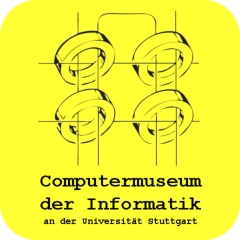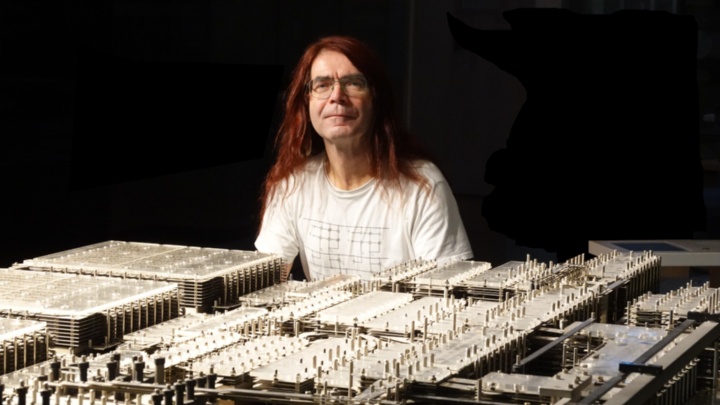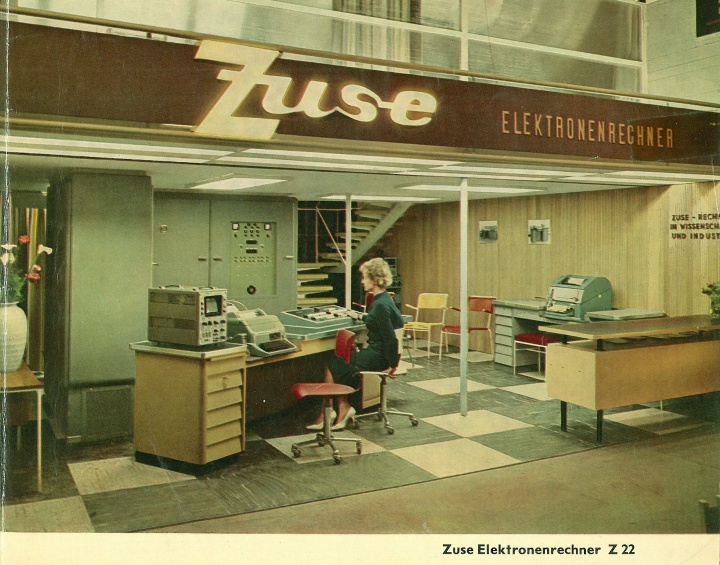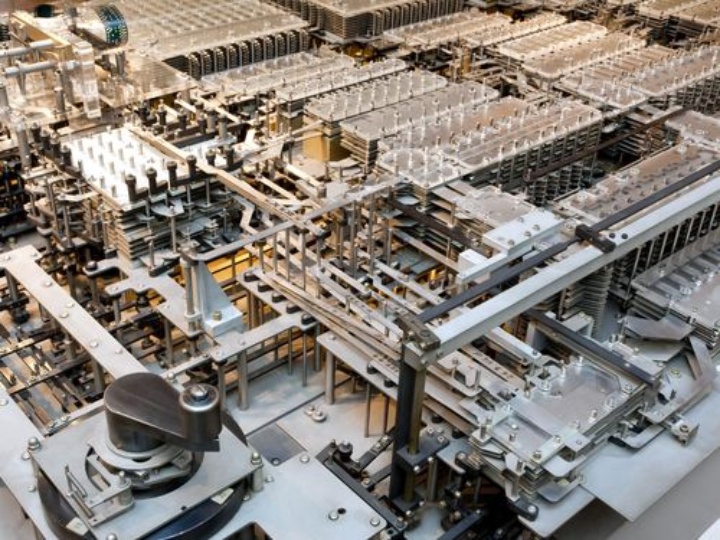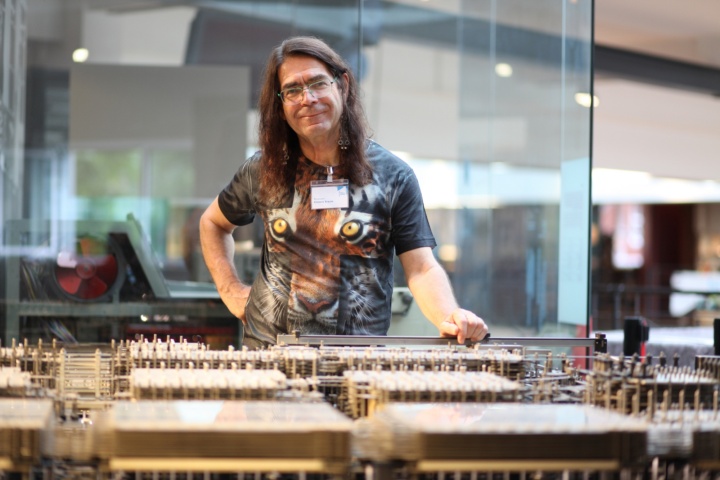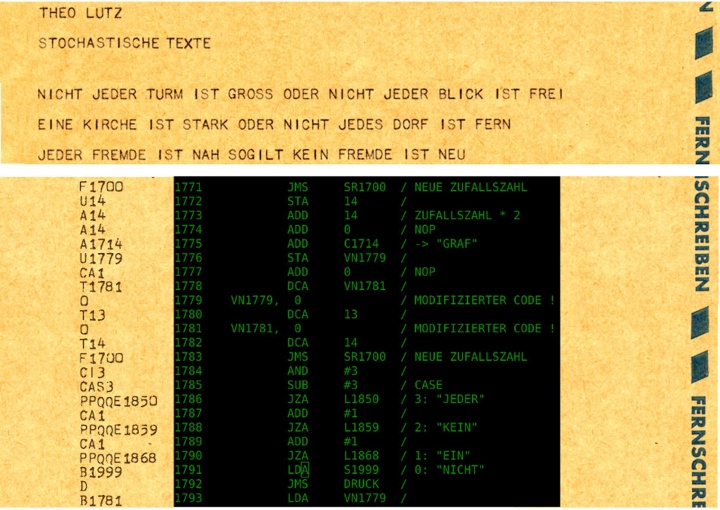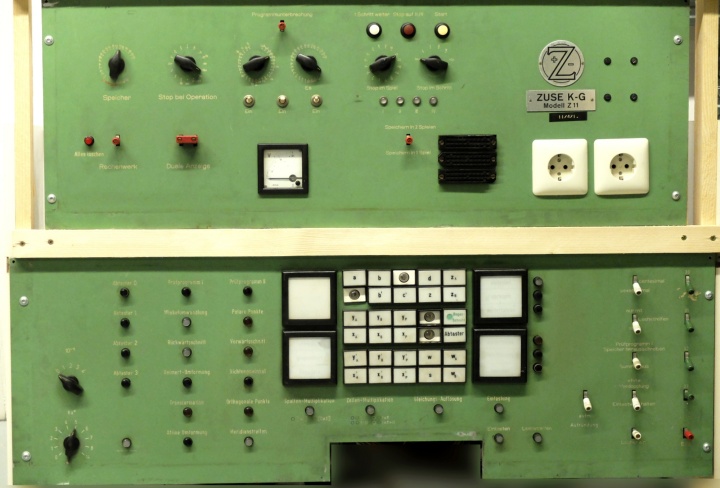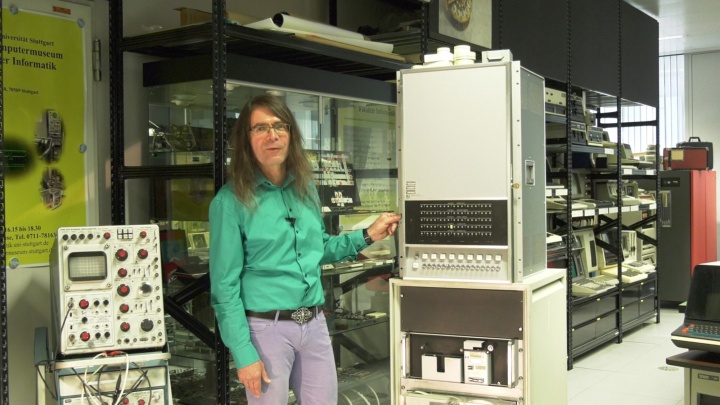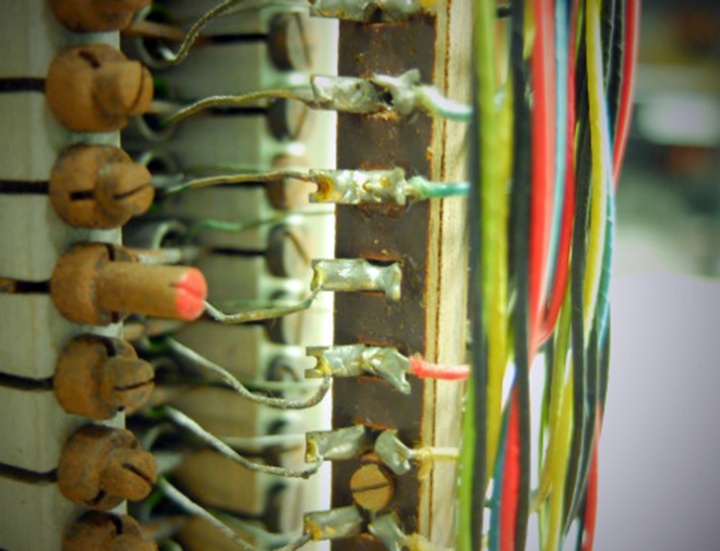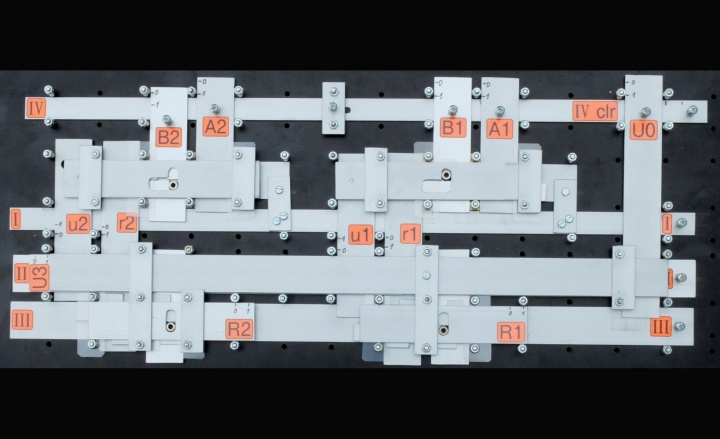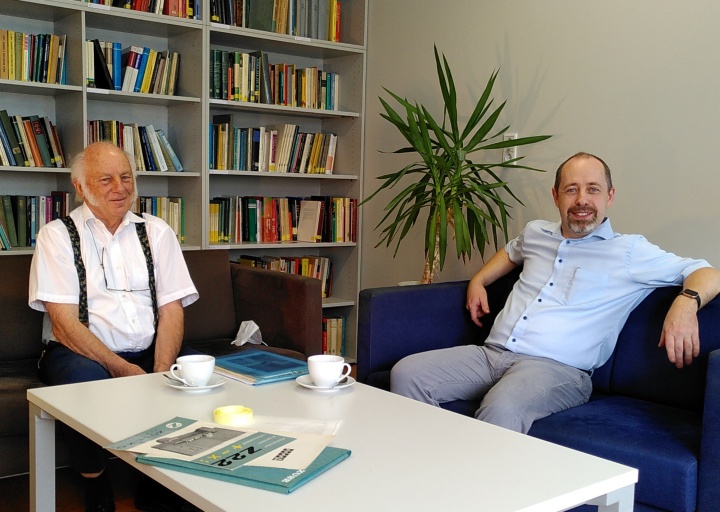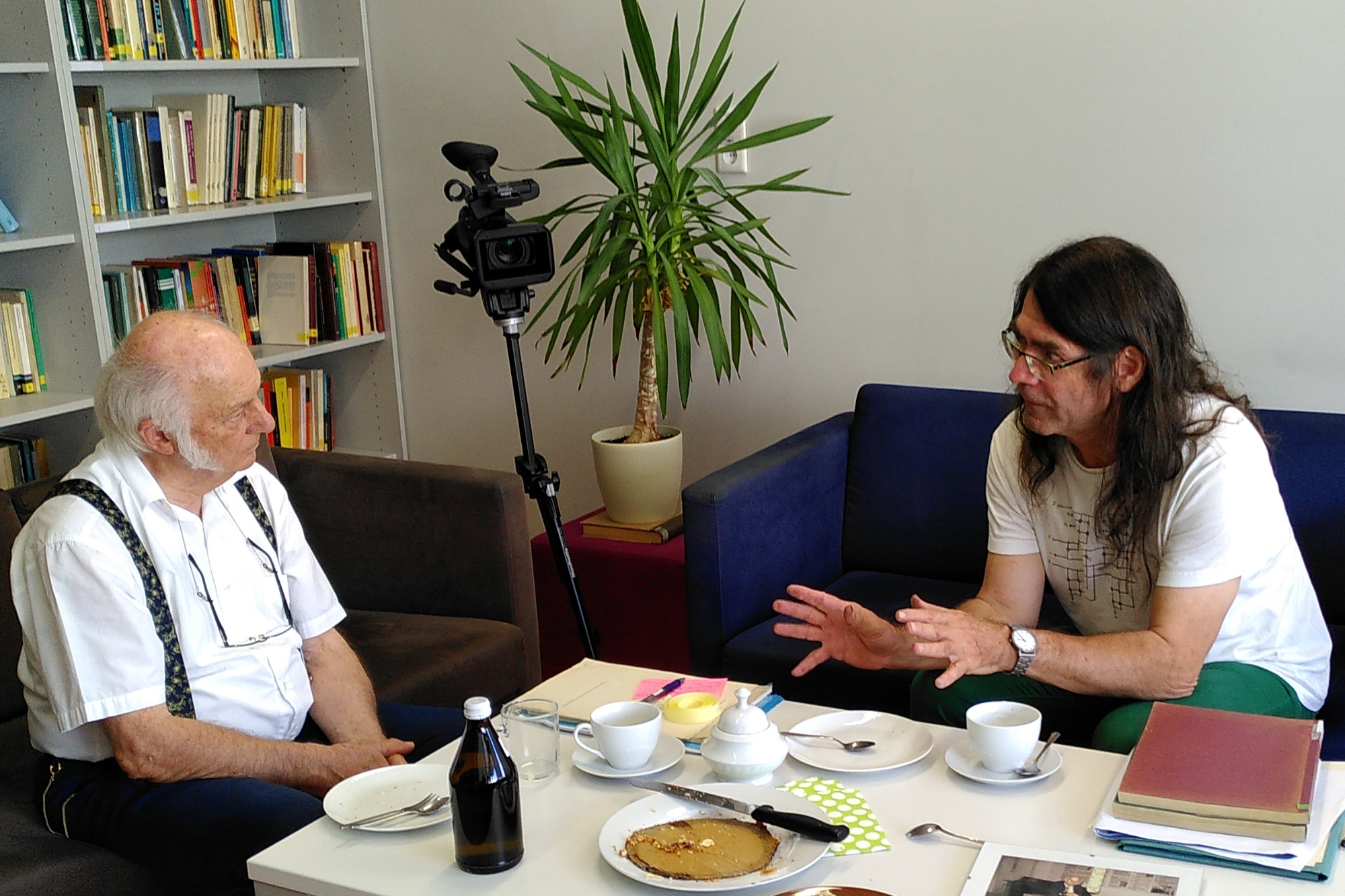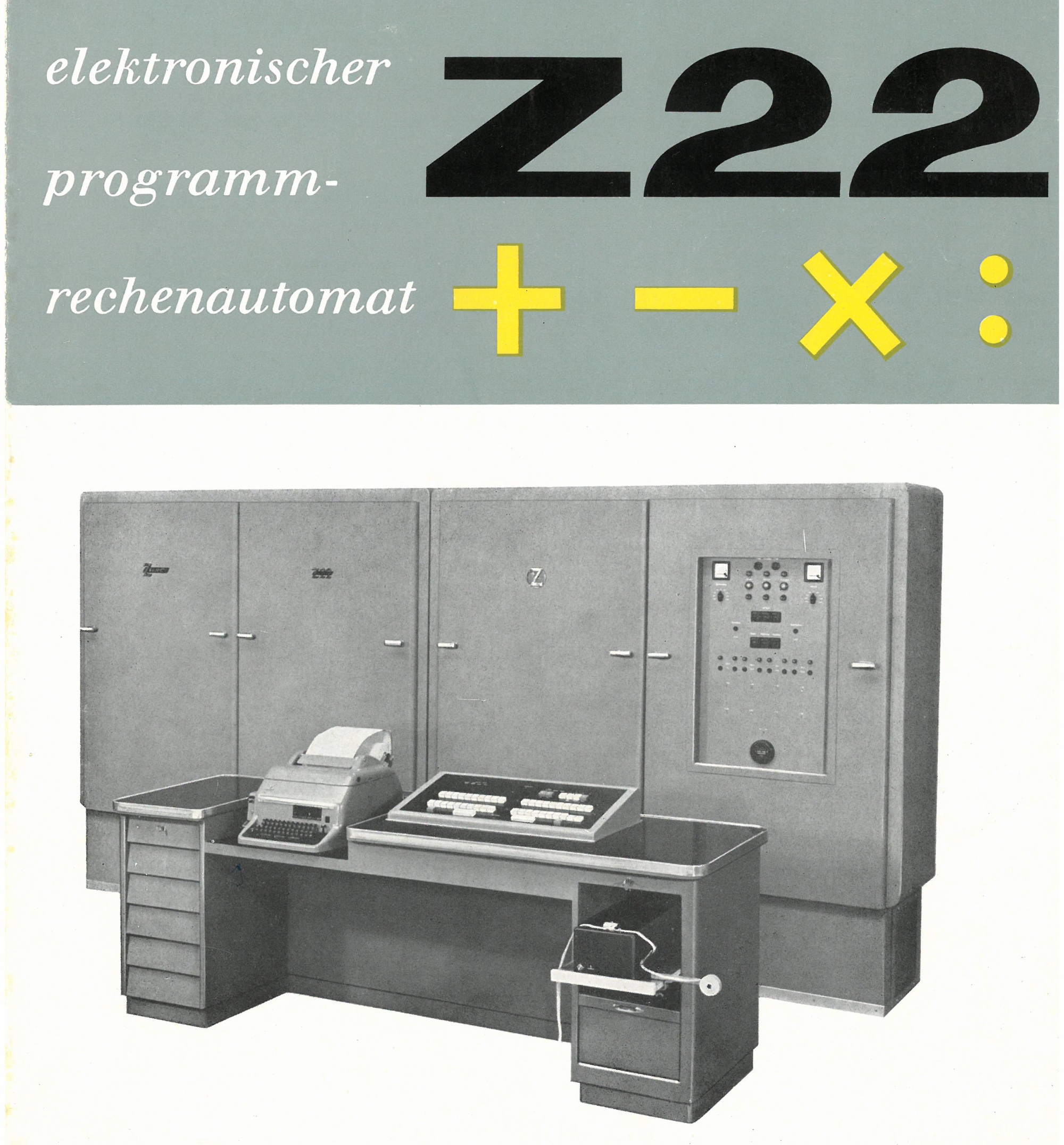The Zuse Graphomat Z64 is an early graphical output device for computers. It came onto the market at the beginning of the 1960s. The increment is 1/16mm, the maximum speed is 22.5 mm/sec. The whole construction is extremely solid and heavy, which on the other hand also made it possible to use engraving needles and cutting gravers instead of drawing pens and thus also to cut foils or paper, for example. The Gaphomat is not controlled directly online by the computer, but via punched strips, initially via 5-channel strips, later also via 8-channel strips. This has the advantage that although the University of Stuttgart gave its Graphomat to Furtwangen University of Applied Sciences in the 1970s, original punched strips have been preserved, the contents of which we will make visible at our "Evening at the Computer Museum".
Livestream - Evening at the Computer Museum from 13.06.2024
Klemens Krause reports on new progress and results in the restoration of the Z1 replica
From November 6, 2023 to November 21, 2023, Klemens Krause was in Berlin for the third time at the German Museum of Technology to get the Z1 running again. He will show the results achieved, the documentation of the restoration and the further strategy to get the machine running again in a summary.
In a longer video sequence, the complete readout of all memory cells of layers 1 to 7 will be shown - this is a major step in the restoration of the machine and will not only delight fans of Konrad Zuse.
On the occasion of the 113th birthday of Konrad Zuse.
On June 22, 2023, the Computer Museum dedicated an evening from the event series "Evenings at the Computer Museum" to the Z22 in Karlsruhe.
The switching on and the operation of the Z22 in Karlsruhe is shown, e.g. the playing of the "Badener Lied" and an Algol compilation. This is followed by explanations of the architecture and circuitry of the machine, a comparison of the circuits of Helmut Schreyer, the Z22 and the LGP-30.
The German Museum of Technology in Berlin houses a reconstruction of the world's first computer - the Z1. The original, the only freely programmable mechanical computer that works in the binary number system, was built by Konrad Zuse from 1936 to 1938 in his parents' living room. It took only 2 years to build. Konrad Zuse was 26 years old at the time. The original was destroyed during the war. In 1986, Konrad Zuse, now 76 years old, began to reconstruct the machine. After another 2 years of construction, it was handed over to the German Museum of Technology and was fully functional. After Zuse's death, the machine could no longer be kept in working order. Even before the corona lockdown, a cooperation between the German Museum of Technology and the Stuttgart Computer Museum was launched with the aim of getting the machine up and running again. In March 2022 and August 2022, the project began with initial investigations into the condition of the machine and the technical problems it was experiencing. Strategies and ideas for practical procedures and technical documentation were also developed, as the restoration would require extensive dismantling of the machine, which consists of an estimated 30,000 individual parts.
From March 6 to March 20, 2023, the glass lintel will be removed from the machine for the second time, and Eva Kudrass, head of the computer science collection at the DTM, and Klemens Krause from the Computermuseum Stuttgart will attempt to disassemble, document, and readjust the jammed memory controller, starting with the plan work under the paper tape reader. The results of this work were reported on March 16 in a livestream as part of our virtual event series "Evenings at the Computer Museum".
The video shows the main memory of a Zuse Z22, a magnetic drum. The motor sits on top, the drum (encapsulated, so you can't see it) underneath. On the side are the connections for the read/write heads distributed around the circumference.A single drum of a Z22, which we test run with a three-phase frequency converter. The drum motor needs three phases with 100 Hz to reach the required speed.
In December 2022 Klemens Krause built a 4-bit adder with accumulator in the semiconductor technology of the 2nd computer generation. In 24 videos, the construction could be followed as an Advent calendar on the YouTube channel of the museum.
December 18 was dedicated to Konrad Zuse. Klemens Krause built a switch panel with parts of an old Stabil construction kit and reminded of the buildings and machines that Konrad Zuse had built from Stabil parts.
From 22.08. - 01.09.2022 Klemens Krause was in Berlin to make the memory of the Z1 functional again on invitation of the German Museum of Technology.
The freely programmable mechanical calculating machine Z1, completed by Konrad Zuse in 1938, was destroyed in the 2nd World War. In 1989, Konrad Zuse produced a replica of the calculating machine, which can now be seen in the German Museum of Technology in Berlin.
The Z1 contained all the essential components of a computer: a calculating unit, a memory, an input unit and an output unit. It processed binary numbers. Unfortunately, the machine is currently inoperable.
Klemens Krause checked in every day with a livestream from the museum to report on progress and setbacks. All livestreams can be found on our YouTube channel. [DE]
In the event "Evenings at the Computer Museum" from 08.09.2022 on the topic "Mechanical Computer Z1" Klemens Krause shows the functions of the Z1 and explains repair attempts and problems. Video recording of the event [DE]
Re-enactment of the "Stochastic Texts" by Theo Lutz
In July 1959 Theo Lutz wrote a program to generate his "Stochastic Texts" on a Zuse Z22. The original program is now in the archives of the German Literature Archive (DLA) Marbach.
On June 22, 2022, Klemens Krause, Christian Corti and Toni Bernhart reproduced Lutz's experiment on an LGP 30, a tube-equipped magnetic drum computer from 1958, at the Computer Museum of the University of Stuttgart. The program was subsequently demonstrated on the PDP-12. The experiment was streamed live in the event series "Evenings at the Computer Museum".
The viral event series "Evenings at the Computer Museum" was dedicated to the 111th birthday of Konrad Zuse on June 22, 2021. Last year, the Computer Museum received the operating console of a Z11. This and the 111th birthday are the occasion to take a closer look at the architecture and arithmetic capabilities of the Z11 and to explain the principles of the hardware, which consists of telecommunication relays.
The Z11 is the first computer that was built in series in Germany and used commercially. Coming out in 1955, 38 units were delivered in mid-1960. The two parts of the panel are currently mounted on top of each other in an auxiliary frame until a creative solution for the arrangement in the original position is found.
On the occasion of Konrad Zuse's 110th birthday on June 22nd, 2020, the Faculty of Mathematics and Physics in cooperation with the Computer Museum of the University of Stuttgart published a video as part of the lecture series "Mathematics and Physics between School and University". The recordings for this took place on May 29, 2020.
Under the title "The Roots of the Computer", Klemens Krause from the Computermuseum Stuttgart presents various algorithms for calculating roots, which he then demonstrates on various mechanical and electronic calculating machines from his collection.
The lecture gives an insight into the history of the computer and the interplay between algorithms and technical implementation options. Konrad Zuse was not only the designer of the first freely programmable (mechanical and digital) calculating machines, essential aspects of binary floating point arithmetic and their implementation in digital calculating systems can also be traced back to him.
The video is in German.
In 1986, Konrad Zuse began to reconstruct the Z1 from memory, perhaps to prove to the world that this machine could have been built back then and that it could have worked. The reconstructed machine is exhibited in the German Museum of Technology. For a better understanding of the mechanical switching element technology, Klemens Krause built a cascadable arithmetic unit out of aluminum strips and spacer sleeves, on which one can understand and try out the function of the half adders and the one-step transfer according to Konrad Zuse.
In an entertaining talk with Apl. Prof. Jens Wirth illuminates Prof. Wendland (Department of Mathematics at the University of Stuttgart) the various stations on his path to mathematics and the challenges and innovations during this time, such as the introduction of the Numerk lectures and work on the Z22 and Z23 by Konrad Zuse.
The interview is in German.
|
Prof. Wendland and Klemens Krause (Computer Museum) |
|



